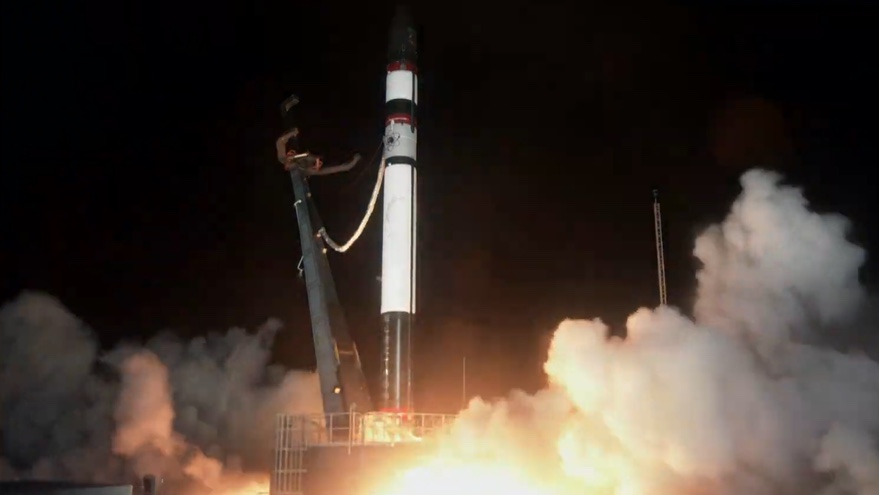WASHINGTON — A Rocket Lab Electron rocket failed to reach orbit May 15 when its second stage engine shut down seconds after ignition, the second launch failure in less than a year for the company.
The Electron lifted off from Rocket Lab’s Launch Complex 1 in New Zealand at 7:11 a.m. Eastern. The liftoff was delayed by a little more than an hour because of upper-level winds.
The first stage of the vehicle appeared to perform as expected. The second stage then separated and ignited its single Rutherford engine. However, video from the rocket broadcast on the company’s webcast of the mission showed that engine shutting down seconds later. Telemetry from the launch indicated the vehicle was slowing down before that telemetry was removed from the webcast.
“An issue was experienced during today’s launch, resulting in the loss of the mission,” the company announced on social media nearly a half-hour after liftoff. “We are deeply sorry to our launch customers BlackSky and Spaceflight. The issue occurred shortly after stage two ignition.” The company did not immediately release additional information about the issue.
The rocket was carrying two imaging satellites for geospatial intelligence company BlackSky. The launch was the first of four dedicated missions under a contract announced earlier this year through launch services company Spaceflight. The previous Electron launch, in March, also carried a BlackSky satellite as part of a rideshare mission.
The launch is the second failure of the Electron in less than a year, and the third in 20 launches. A July 2020 launch failed to reach orbit when the second-stage engine shut down nearly six minutes after liftoff. An investigation blamed the failure on faulty electrical connections in the stage. The vehicle returned to flight nearly two months later.
The first Electron launch, in 2017, also failed when a telemetry problem for range safety equipment triggered an abort several minutes after liftoff.
The focus on this launch was to be the company’s efforts to recover the rocket’s first stage as part of its efforts to eventually reuse those boosters. The company implemented improvements to the booster’s heat shield, among other changes, based on data collected during the first booster recovery in November 2020.
